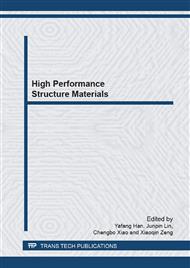p.437
p.443
p.449
p.457
p.463
p.470
p.478
p.483
p.489
Analysis of Factors Influencing CPU Heat Dissipation of Porous Magnesium
Abstract:
Orthogonal experiments were used to investigate the porous magnesium CPU heat dissipation under the forced convection condition. Three factors were involved in the experiment, i.e. different porosity level (50%, 60%, and 70%), different pore size (0.8-1.6mm, 1.6-2.2mm, 2.2-3.2mm) and different thickness (20mm, 35mm, 50mm) of open-cell porous magnesium. The materials used in the present study were prepared by upper-pressure infiltration method. Experimental results indicated that cooling effect factors of porous magnesium are relevant with the pore structure while the most important one is pore size, followed by porosity. Under the experimental conditions with the pore size of 2.2~3.2mm, porosity of close to 70%, and thickness of 35mm, the maximum heat dissipation benefit was obtained. Compared with the commercial radiator, the fluid flow and heat transfer on the surface of radiators integral fins are better than the others when the CPU is fully busy. Average reduced temperatures of porous magnesium CPU by using upper-pressure infiltration method are 4.4 - 8 lower compared with the commercial ones.
Info:
Periodical:
Pages:
463-469
Citation:
Online since:
February 2013
Authors:
Keywords:
Price:
Сopyright:
© 2013 Trans Tech Publications Ltd. All Rights Reserved
Share:
Citation:


